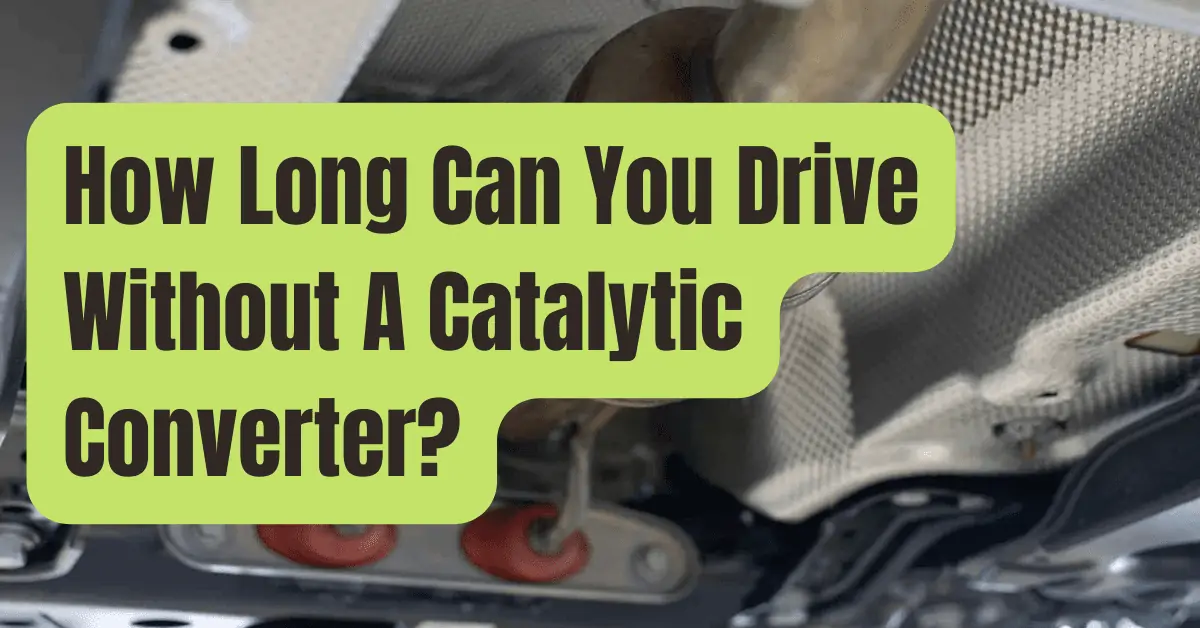The catalytic converter is more durable than the majority of your car’s components.
This is so that it can survive the high working temperatures.
However, corrosion, impact damage, or issues with engine performance might still cause it to malfunction or fail.
Can you continue to drive your automobile if the converter fails while you’re on the road? Is driving without a cat-con safe? How long can it be used before it has to be replaced?
Let’s respond to a few of these queries.
Is It Possible To Drive With A Damaged Catalytic Converter?
Yes, technically.
Before catalytic converters were widely used in automobiles in the 1970s, older models worked perfectly fine.
So, the answer to your question—whether your vehicle will still start without one—is yes.
However, you also need to consider if you should take a chance.
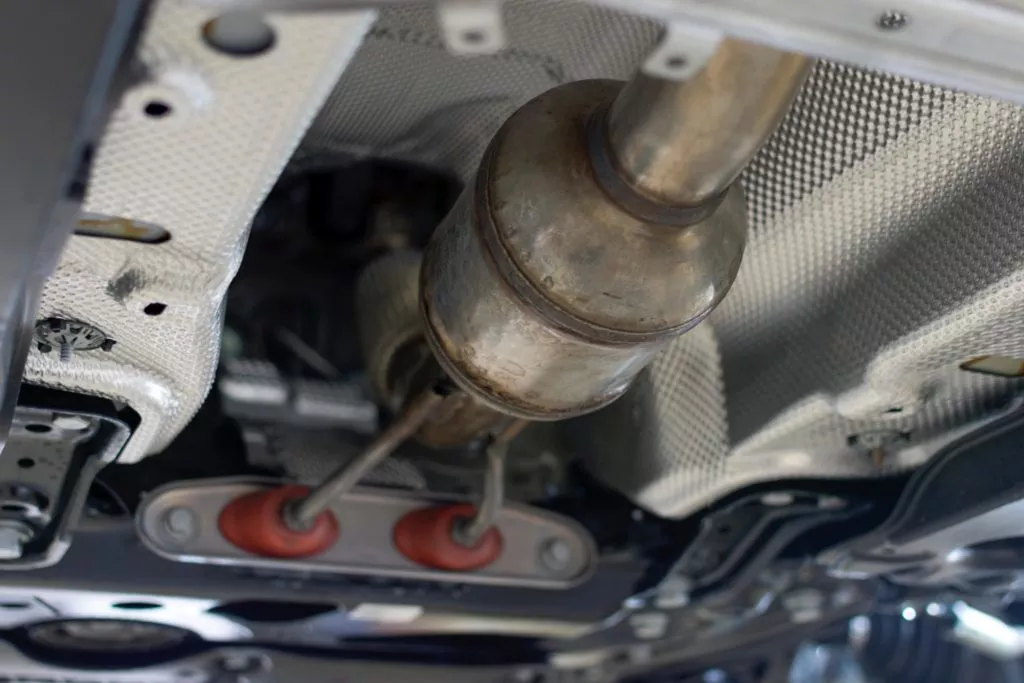
The first thing you need to be aware of is that it is prohibited to alter the catalytic converter in any manner.
This is particularly true in areas like California, where restrictions governing automobile emissions are very severe.
The OBD 2 catalyst efficiency monitor on a contemporary automobile (newer than 1996) will cause the check engine light to come on if the light-off catalyst (the one nearest to the engine) is removed.
Behind the light-off catalyst is an oxygen (O2) sensor that gauges the converter’s ability to store oxygen.
Four-cylinder engines will only have one of these light-off converters, whereas six- and eight-cylinder engines will have two (one for each bank).
A sensor for oxygen (O2) keeps an eye on the exhaust stream passing right behind each light-off catalyst.
This O2 sensor is referred to as a “downstream O2 sensor” in parts shops.
If the back catalyst is removed, the check engine light (MIL) won’t come on since it isn’t being checked for O2 storage.
But if the catalyst is taken off, the car will always fail the emissions test.
Because one catalyst cannot manage all three, the front catalyst handles NOx emissions while the rear catalyst handles CO and HC emissions.
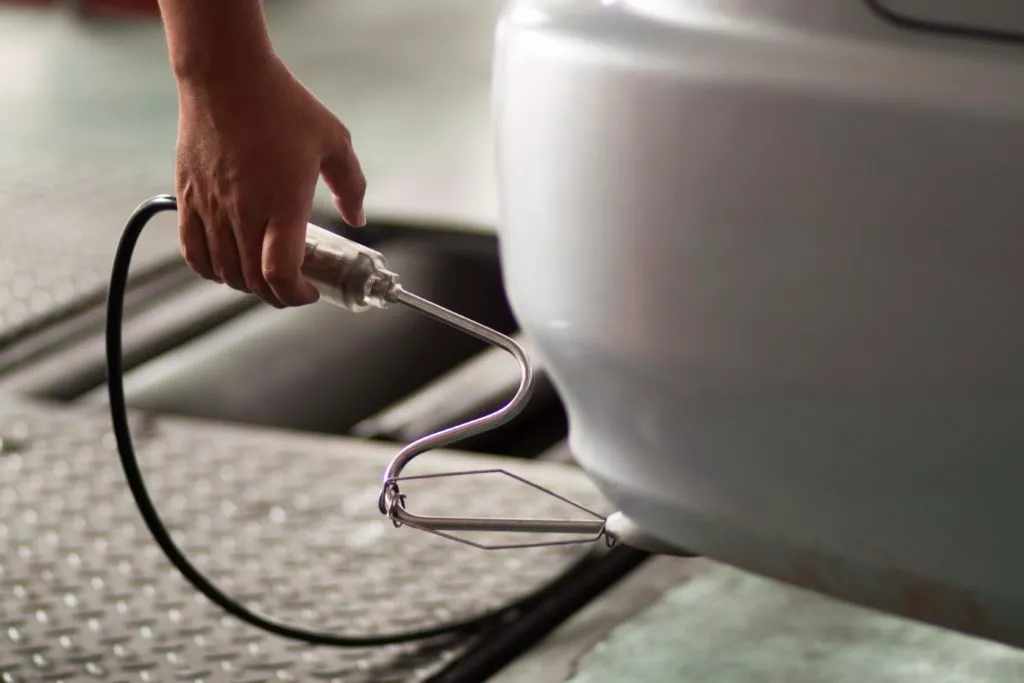
Therefore, removing either the front or rear catalytic converters will result in your vehicle failing the emissions test in states and localities where emissions testing is required.
You won’t be allowed to renew your registration until the emissions system of the car has been fixed to OEM standards.
What if the converter is still there but isn’t operating correctly? Naturally, it will result in your car failing the emissions test.
A diagnostic issue code will be saved if the catalyst monitor feature of the powertrain control module indicates that a monitored converter’s O2 storage capacity has degraded.
This will also be the case if the converter becomes blocked as a result of the honeycomb brick breaking or suffering significant exterior damage.
Your automobile may display symptoms such as a no-start, a painfully slow engine, a little reduction of power, and a notable drop in fuel efficiency.
A catalyst that has failed and is affecting how the car operates often degrades gradually enough that it may not be immediately apparent.
Some drivers will keep going despite a little loss of power or even an illuminated check engine light.
They do this until the problem becomes worse.
The important thing to remember is that you may keep driving without worrying about your automobile breaking down if the converter is just losing efficiency.
However, if your state requires emissions testing, you will ultimately need repairs.
How Long Is A Catalytic Converter Necessary For Driving?
Catalytic converters are not required to operate vehicles.
Although removing a catalytic converter is illegal in every state, even those that don’t enforce emissions requirements, there are cars in non-emission testing regions with catalytic converters that have been removed.
Just be aware that deliberately disabling a vehicle’s pollution control system is a criminal violation if you decide to remove the converter yourself (a respectable shop won’t often do this for you).
Additionally, the government has the legal right to penalize you hundreds of dollars for doing this.
You’ll be able to tell by the sound as soon as you start the car if someone has sawed off your catalytic converter in order to sell it for scrap (it occurs all the time pretty much everywhere these days).
If your insurance will cover it, you may be able to submit an insurance claim to have the exhaust system fixed in such situation.
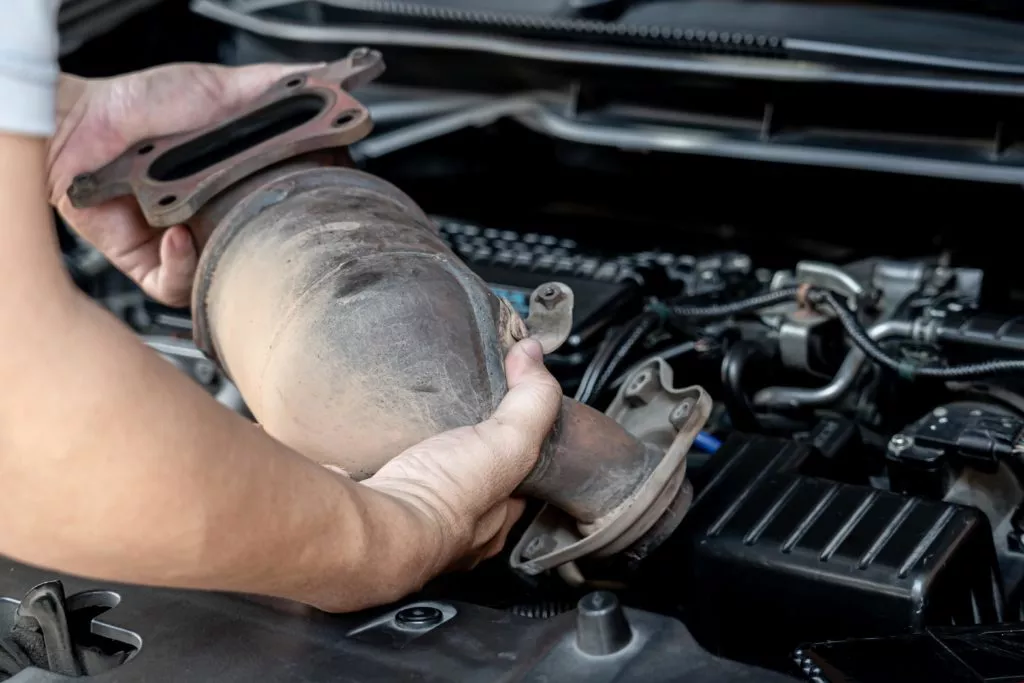
Is Driving With a Faulty Catalytic Converter Safe?
Let’s start by stating that a missing converter and a failing converter are two distinct concepts in order to respond to the query.
Yes, it is safe to drive if the car will function well enough to transport you from point A to point B.
However, catalytic converter failures are not always the same.
Safety won’t matter if the converter has broken down or is absent.
But as soon as you notice the failure or theft, you’ll need to replace the converter.
Additionally, unless you intend to fix the exhaust to make it legal once again, never purchase a car that has had its converter removed.
Safe is a relative term after all.
Even if you are secure physically, you may not be safe legally.
Furthermore, it may not be a smart idea to keep driving if your catalytic converter is blocked or internally breaking down to the point where it is depriving your car of power.
Driving a car that doesn’t function properly might result in significant traffic accidents when doing so in dense, rapid traffic (such as on a congested interstate close to a major city).
Also keep in mind that even if you don’t see or smell anything coming from the exhaust, a bad converter will result in higher tailpipe emissions.
This is not a green practice.
Additionally, humans may pass away in confined places from carbon monoxide, one of the three gases the converter deals with.
When there are exhaust leaks and people remain inside the car for a long time while it is idling, the danger is highest.
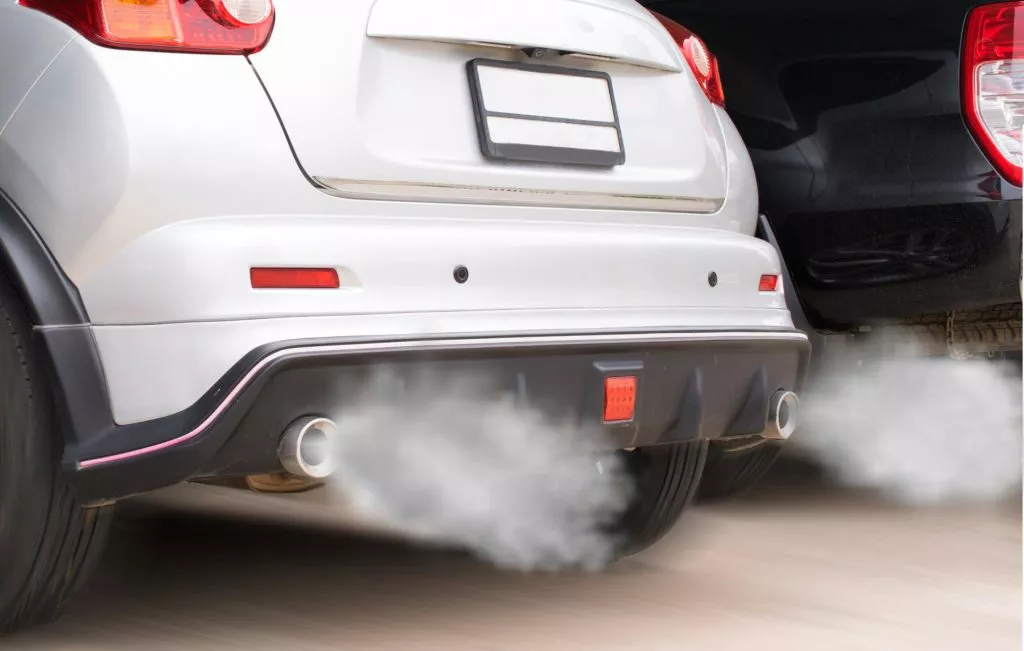
The converter will also affect engine performance if it has mechanically failed to the degree that it inhibits exhaust flow.
However, other components of your automobile won’t often sustain any harm.
A converter that becomes excessively hot would be a conspicuous exception to the above statement about “no ordinary harm” (like RED hot, which can and does happen).
There have been instances when parked cars ignited dry grass.
Keep in mind that certain gasoline lines and the majority of fuel tanks on current vehicles are made of plastic.
The risk posed to everyone within or beside the automobile, as well as to other vehicles, is increased by the fact that the fire beneath the car poses a threat to human life.
A Catalytic Converter Is What?
An emission-controlling component of the exhaust system is the catalytic converter.
It was first introduced in the 1970s and rapidly became a common feature on the majority of automobiles.
These days, almost all automobiles must have it, according to federal and state rules.
It is prohibited to remove, alter, or purposefully harm the converter for any reason, as was already stated.
The Function of a Catalytic Converter
Nitrogen oxides, hydrocarbons, and carbon monoxide are three pollutants that a three-way catalytic converter converts into the safe byproducts of water and carbon dioxide.
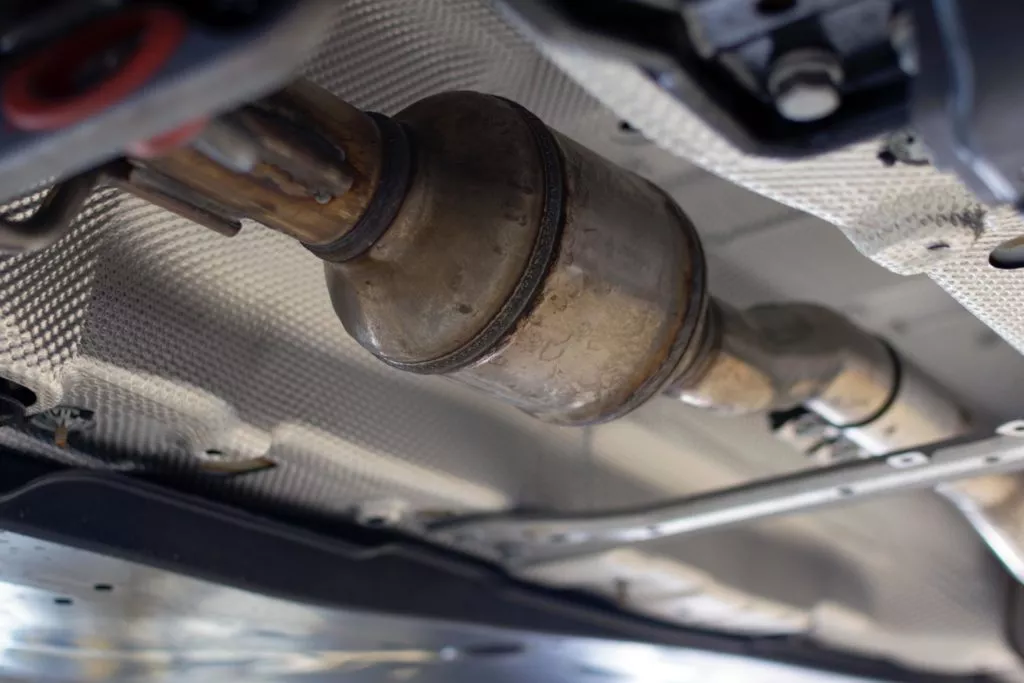
Because the atmosphere is composed of 78% nitrogen and 21% oxygen, NOx is produced when the “burn” temperature of the combustion chamber exceeds 2500 degrees Fahrenheit.
Nitrogen expands as a result of being overheated when atomized hydrocarbon fuel is burnt in the combustion chambers.
During combustion events, this is what propels the piston.
However, when temperatures are high, oxygen combines with nitrogen to generate NOx.
Exhaust gas recirculation (EGR), a part of the emissions system, recycles some inert, oxygen-free gas back into the intake stream while the engine is running above idle.
In order to avoid NOx, this cools the combustion burn.
When the spark occurs, every hydrocarbon (HC) molecule wants to be “married” to two molecules of oxygen.
The spark initiates a combustion event, which joins the oxygen and carbon.
When the air and fuel mixture is ideal, the explosion’s byproduct is CO2, which is what humans and other creatures exhale.
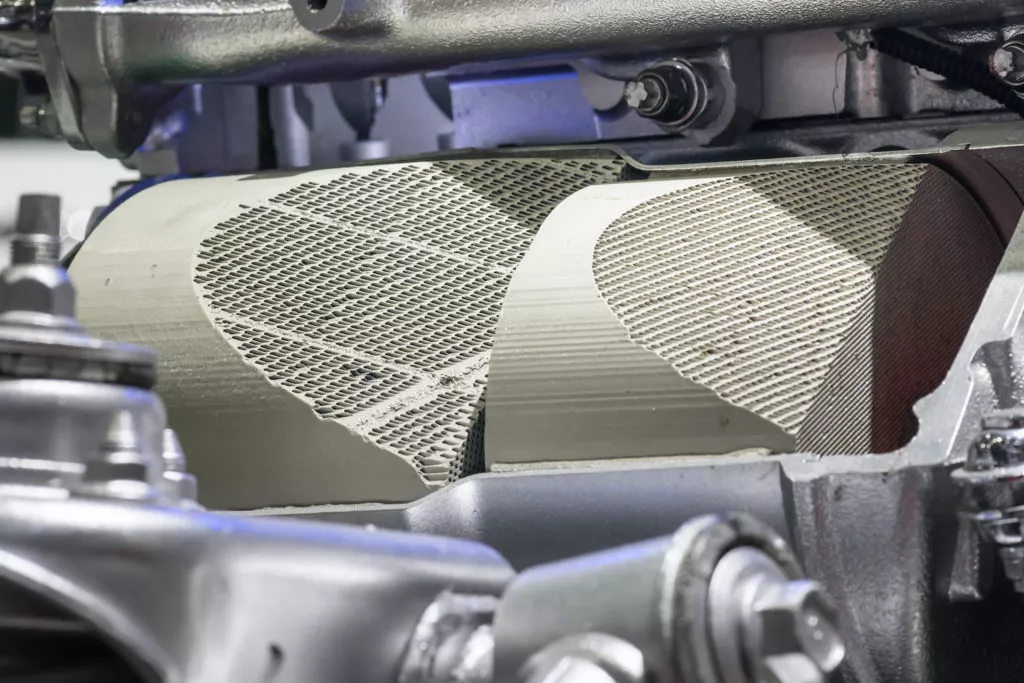
Some HC molecules may only get one molecule of oxygen (CO) or no oxygen at all (NO) if there is a tiny excess of fuel, causing the HC to quit the engine on its own.
The catalyst reduces NOx to nitrogen and oxygen, adding oxygen to the CO and HC to cause their conversion to CO2.
Water vapor, which is as safe to humans as CO2, is a byproduct of engine combustion (by default).
Without altering the converter itself, the converter employs precious metals to start chemical processes that transform dangerous gases into less dangerous ones.
A “catalyst” does this.
Catalytic Converter Failure Signs and Symptoms
There are indicators that the catalytic converter in your car has failed or is about to fail.
They consist of:
- Check engine light is on.
- Inadequate acceleration
- Stalling
- A car that starts slowly or not at all
The check engine light will often be the sole indication of a faulty converter.
However, problems like poor acceleration, stalling, and difficult starting may happen when the converter gets clogged or blocked.
In conclusion, driving an automobile with a damaged or missing catalytic converter is not only prohibited but also possibly dangerous.
Try to make your travels short and limit your driving to neighboring destinations if you have to use your car until you can afford a new cat-con.

